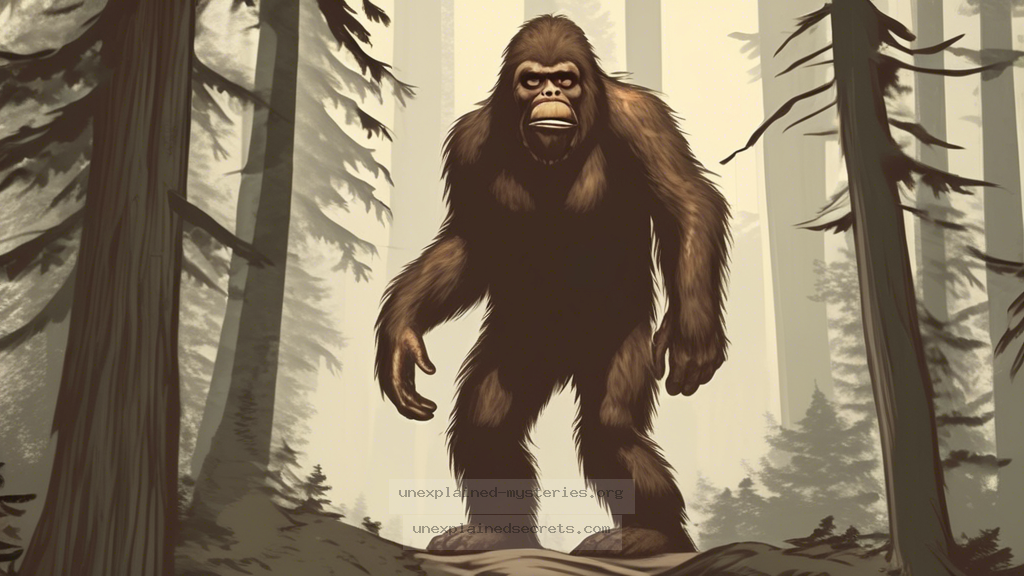What Evidence Suggests the Existence of Bigfoot Beyond Anecdotal Sightings?
What Evidence Suggests the Existence of Bigfoot Beyond Anecdotal Sightings?
The search for Bigfoot, an elusive creature often described as a large, ape-like being, has captivated the imagination of countless individuals for generations. The question of whether Bigfoot truly exists extends far beyond anecdotal sightings and folklore; it delves into the realms of biology, anthropology, and the very nature of belief. The significance of exploring this question lies in understanding the intersection of science and legend, and how compelling evidence can be interpreted in various ways. In this blog post, we will dissect the evidence surrounding Bigfoot, examining historical accounts, physical evidence, and the implications of ongoing research.
Historical Context of Bigfoot Sightings
The lore of Bigfoot can be traced back to indigenous cultures across North America, where stories of large, hairy beings inhabiting the forests are deeply embedded in their spiritual traditions. For instance, the Salish people of the Pacific Northwest refer to this creature as “Sasquatch,” which translates to “wild man.” These ancient narratives set the foundation for modern sightings and investigations. The first recorded sighting that gained widespread attention occurred in 1958 when construction workers in California discovered large footprints near Bluff Creek. This incident propelled Bigfoot into popular culture, igniting a frenzy of interest that persists to this day.
Core Concepts: What Constitutes Evidence?
When discussing evidence for Bigfoot, it’s essential to delineate the types of evidence typically referenced. This can include:
- Physical Evidence: Footprints, hair samples, and fecal matter.
- Audio Evidence: Recorded sounds attributed to Bigfoot, such as howls and knocks.
- Visual Evidence: Photographs and videos purportedly capturing the creature.
- Eyewitness Testimonies: Accounts from individuals who claim to have seen Bigfoot.
Each type of evidence carries varying degrees of credibility, and the scientific community often debates their validity. It is crucial to approach each claim with a critical eye, weighing the evidence against known biological and environmental factors.
Physical Evidence: The Footprints and Hair Samples
Perhaps the most iconic form of evidence for Bigfoot is the footprint. Numerous casts have been made over the years, with some measuring up to 24 inches long and 8 inches wide. For example, the famous “Patterson-Gimlin film” from 1967 includes footage of a creature striding through a creek, leaving behind large footprints. Skeptics have argued that these prints could easily have been fabricated, yet experts in forensic analysis have pointed out unique anatomical features that suggest authenticity.
In addition to footprints, hair samples have also been collected, with some showing characteristics not typical of known wildlife. However, many of these samples have been inconclusive upon DNA testing. A notable case involved hair collected in the 1990s that was later identified as that of a deer, highlighting the challenges in distinguishing between known species and potential new ones.
Audio Evidence: Sounds from the Wilderness
Audio recordings present another intriguing layer of evidence. Enthusiasts and researchers have recorded various sounds in remote areas, claiming they are vocalizations of Bigfoot. One of the most famous examples is the “Sierra Sounds,” recorded in the 1970s by Ron Morehead. These sounds include a range of howls, grunts, and whistles. Some analysts have compared these sounds to known primate calls, while others argue they are unique and could indicate an undiscovered species.
Visual Evidence: The Role of Photography and Videography
Visual evidence has been a double-edged sword in the quest to prove Bigfoot’s existence. The Patterson-Gimlin film remains one of the most credible pieces of visual evidence, but many videos claiming to show Bigfoot have been debunked as hoaxes. Advances in technology, such as trail cameras and drones, have provided new opportunities for capturing evidence. In 2015, a trail camera in Ohio allegedly recorded a figure that some claimed resembled Bigfoot, though the image quality left much to be desired.
Eyewitness Testimonies: The Human Element
Eyewitness accounts form the backbone of Bigfoot lore. These testimonies often describe encounters that are both terrifying and awe-inspiring. While individual stories vary, common themes emerge: a feeling of being watched, a sudden silence in the forest, and the creature’s immense size. Some researchers have undertaken efforts to document these accounts systematically, leading to databases of sightings that can be analyzed statistically. However, the subjective nature of human experience raises questions about the reliability of these testimonies.
Alternative Perspectives: Skepticism and Scientific Inquiry
While many enthusiasts passionately advocate for the existence of Bigfoot, there is a significant contingent of skeptics who challenge these claims. Critics argue that the lack of conclusive evidence, such as a body or verifiable DNA, suggests that Bigfoot may be a product of folklore and misunderstanding. They posit that sightings can often be explained by misidentifications of known animals, such as bears or large primates. Additionally, cognitive biases, such as pareidolia (seeing patterns in random stimuli), can lead to false conclusions.
Common Misconceptions and Clarifications
One of the most common misconceptions about Bigfoot is that it is merely a myth or a hoax. While there are certainly fraudulent claims, many believe that the phenomenon is rooted in something real. Another misconception is that all sightings are identical; however, descriptions vary widely across different regions and cultures, indicating a complex tapestry of belief rather than a singular entity. It’s also important to recognize that the scientific method requires rigorous standards for evidence, which many Bigfoot claims do not meet.
Best Practices for Investigation and Study
For those interested in conducting their own investigations into Bigfoot, there are several best practices to consider:
- Document Everything: Keep detailed notes of sightings, audio recordings, and photographs.
- Utilize Technology: Invest in high-quality cameras and audio equipment to capture evidence more effectively.
- Collaborate: Work with other researchers and enthusiasts to share findings and insights.
- Respect Nature: Always practice ethical guidelines to minimize impact on wildlife and ecosystems.
Future Developments and Ongoing Research
The field of cryptozoology is continually evolving, with new technologies and methodologies enhancing our understanding. Researchers are increasingly turning to environmental DNA (eDNA) analysis, which can identify species from soil or water samples, potentially offering a non-invasive way to discover if a creature like Bigfoot exists. Furthermore, public interest remains high, which can lead to funding for more rigorous studies and interdisciplinary collaboration.
Conclusion: The Ongoing Quest for Truth
The question of Bigfoot’s existence is not merely about proving or disproving a creature’s reality; it reflects deeper human desires for exploration, understanding, and connection to nature. The evidence, while compelling in many aspects, remains inconclusive. As researchers continue to investigate, the intersection of folklore and science will likely yield new insights, keeping the mystery of Bigfoot alive. Whether you are a skeptic or a believer, this ongoing quest reminds us that the world still holds secrets waiting to be uncovered.
Other Articles
Recent Posts
- What Happened to Flight MH370? The Conspiracy Theories That Still Haunt Us
- What Secrets Lurk Within the Walls of the Infamous Trans-Allegheny Lunatic Asylum?
- What Evidence Supports the Existence of Bigfoot in the Pacific Northwest?
- What Happened to the Indus Valley Civilization? Unraveling the Mysteries of Ancient Urban Life
- Can Telepathy Be Scientifically Proven Through Laboratory Evidence?







